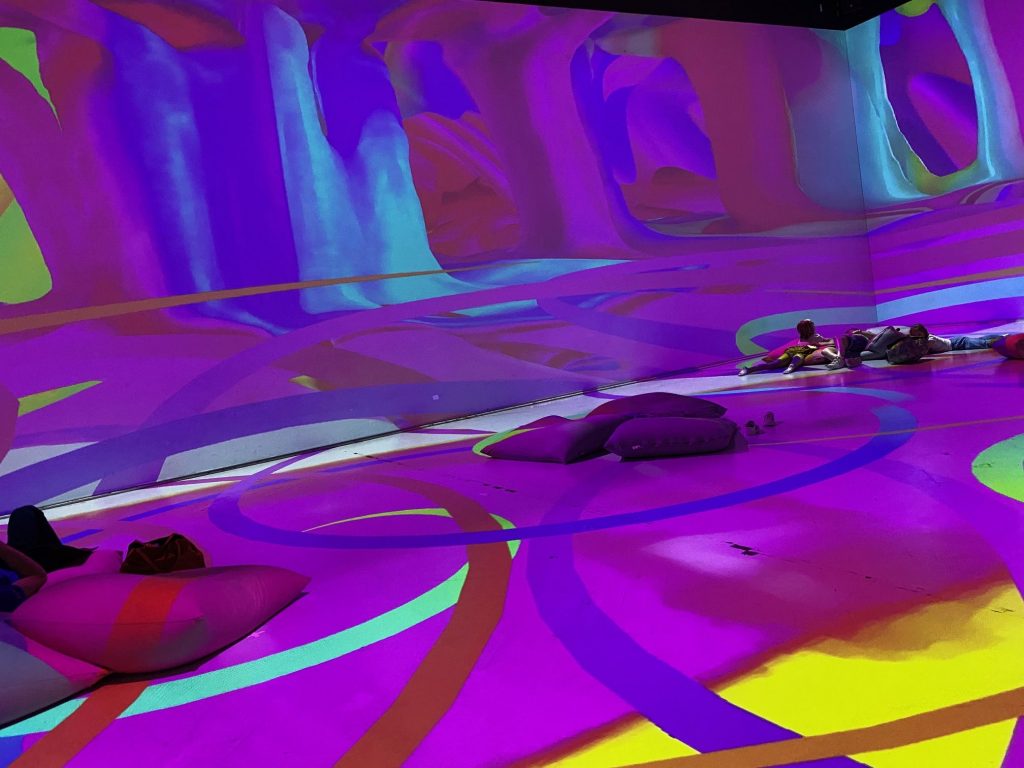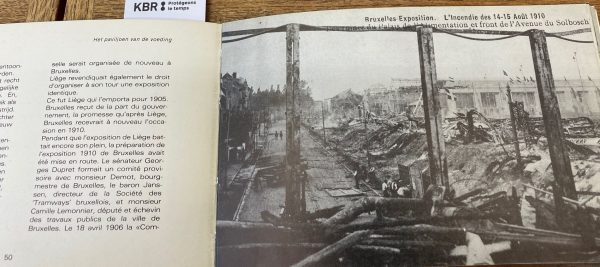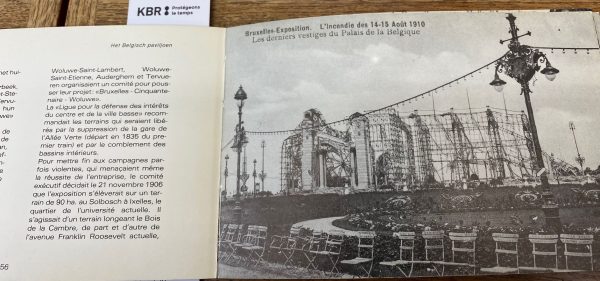“Don’t worry, be happy”. Most people might remember the song of the late 1980s by Bobby McFerrin. Very popular at that time already, it simply took a popular phrase from an Indian mystical preacher and then take this and compose an easy-going melody. Simplicity is the art here, not the complex arrangement of voices or orchestration. Similar to the shifting mood of the late 1980s when eventually even the Berlin wall came down, we are still in need of finding simplicity again.
This is a kind of a good starting point for the visit of the happiness exhibition in Brussels. At the beginning of the exhibition, you do a bit of reading on the neuro-psychological and sociological foundation of happiness to then move on to the more fun part of the exhibition: immergence into rooms of light and colours. Sound complements the visual experience decently. It is interesting to witness that children are immediately seduced by the joyful atmosphere and feel very comfortable in the rooms. Adults are more reluctant to let lose. Drop defences and walls we have become used to and just let go of our concerns of day-to-day hustle. “Don’t worry, be happy”, at least for a while. You deserve it.
The entry price of 16€ at the door is a not-to-be underestimated as an impediment to an entry into the world of happiness in Brussels. Children are free of charge, most of them are happy anyway if their parents spend time together with them. Happiness for many in society remains still a challenge. Art could contribute more in this direction as well. On the “Mont des Arts” happiness is near, it takes just some time and you are very likely to feel the effect of the artist’s creation through splendid interior design taking our senses and emotions seriously. 
1900s
1900 marks the year of the 5th world exhibition in Paris. The Eiffel tower, built for the 4th exhibition in Paris remains the iconic attraction despite the new architecture that is added to Paris as the Petit and Grand Palais as well as the 1st Metro line. Art Nouveau style adds to already impressive architecture in and around Paris. With the planning horizons of several years in advance of events, urban planning with all its facets of urban infrastructure and architecture becomes much of a defining scientific discipline for decades and for most of the time of the century. Grand urban architecture and design constitute just another form of competition between nation states. Most of them want to show off their imperialist acquisitions and, what they define as “curiosities” at the time.
Habib (2005, pp.502) singles out Arthur Schopenhauer and Friedrich Nietzsche as “heterological thinkers” who coin major thoughts in the late 19th century that shall influence the beginning of the 20th century right from the year 1900 onwards. “The world should be formed in your image by your reason, your will, and your love! And truly, it will be to your happiness you enlightened men!” (Nietzsche. Thus spoke Zarathustra 1978, p.110). In retrospect from the 21st century we shall doubt this overly positive approach to human intentions and their will to form the world according to their abstracting ideas only. Tensions between technology and society became visible and it took many decades before society became conscious that it is up to society to choose technologies they preferred.
The planning for the Brussel Expo 1910 started right after the previous Expo 1905 in Liège. Protests in Brussels accompanied already the choice of terrain for the Expo, but the governors and shareholders of the enterprise decided 1906 for a site near the “forêt de Soignes”, where trees had to be cut for access to the construction site and for future visitors under local protest. Women workers were present to exhibit the low pay of women in industries. Child labour was documented with shocking images. Around the globe labour movements started to raise attention. In the U.S. the National Women’s Trade Union League (1903) was founded as well as the National Child Labor Committee (1904). “Bloody Sunday” in St. Petersburg (1905) saw the killing of peaceful protestors in front of the Zsar’s palace, which ignited the Russian Revolution of 1905 and the creation of the Russian Parliament. Some of these issues (child labor) keep returning to our social agenda well into the 21st century.
Einstein’s publication of the theory of special relativity (1905) as well as challenges from social philosophy reflects the huge discrepancy between advancement of the sciences and the living conditions of the masses. Social theories and science advances foreshadow the violent turbulence throughout the 20th century.
(Sources: (1) Max Welch Guerra et al. (2023). European Planning History in the 20th Century: A Continent of Urban Planning. Routledge. (2) St. James Encyclopedia of Labor History Worldwide: Major Events in Labor History and Their Impact, Neil Schlager (2004). (3) Images from I. Van Hasselt(1980) Bruxelles Expo 1910: l’incendie / de brand. J Stevens. 


